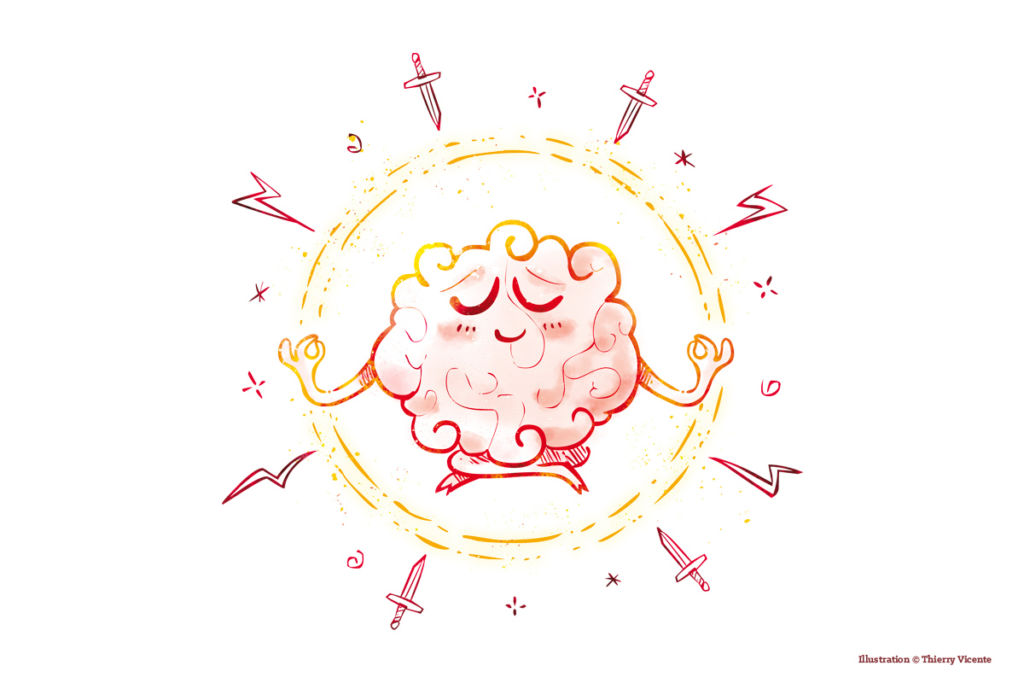[LUM#9] When pain lasts
Scientists at theMontpellier Neuroscience Institute have uncovered the mechanisms responsible for the onset and maintenance of chronic neuropathic pain.After nine years of research, a drug candidate is now being tested that could become the very first specific therapy for this type of pain.

This is the story of a fusional encounter between a molecule called FL and its receptor FLT3. A romance that remained clandestine until Jean Valmier, a researcher at theMontpellier Neuroscience Institute (INM ), brought it to light. Once again, the affair ended badly, resulting in what is known as "chronic neuropathic pain". A pathology affecting almost four million people in France.
Chronic pain
Neuropathic pain is pain caused by nerve damage," explains the researcher. It can be due to surgery, injury, treatment or infection." This is the case, for example, with shingles. Pain becomes chronic "when it lasts for more than three months, and can persist even when the triggering cause, such as shingles, is treated", explains the researcher.
There is no drug available to treat this "pain disease". Morphine, a powerful analgesic, has too many serious side effects to be prescribed on a long-term basis. The same applies to other so-called "repositioning" drugs, which were originally designed to treat other pathologies such as epilepsy or depression, but which can relieve pain. What's more, as Jean Valmier points out , "when they work, they only reduce pain by half, and half a pain is still a pain. It's a huge public health issue. There's a demand from patients who are suffering, from doctors who are desperate because there's not much they can do, and of course from the pharmaceutical industry, because if they had a drug like that, it would be a blockbuster as they say".
The mechanism goes haywire
The reason for this is the lack of knowledge about the mechanism of this pain. We know that when a nerve is injured, blood cells rush to the site of the aggression and secrete molecules capable of activating pain-generating sensory neurons. This is a normal mechanism. But sometimes the mechanism goes haywire," explains the researcher, "and the molecules they release over-activate the sensory neurons. Instead of sending normal information, these neurons create a lot of electrical discharges". These discharges are sent to the central nervous system, which then risks malfunctioning, developing persistent hyper-excitability and hence chronic pain.
And it's here that we meet up with our two inseparable partners, who have remained so discreet until now. Nine years after the launch of the first manipulations, Jean Valmier succeeded in demonstrating "that the FLT3 receptor located on the neuron is activated by a ligand, the FL molecule secreted by blood cells; and it is their meeting that triggers a chain reaction in the sensory system, at the origin of chronic pain. If I inhibit this receptor, the pain disappears". Once the concept had been proven, the next step was to find a way of blocking the FLT3 receptor without any side-effects for the patient.
Five million molecules screened
To achieve this, Jean Valmier called on Didier Rognan, chemist and director of Strasbourg's Laboratoire d'innovation thérapeutique (LIT). The chemist screened over five million molecules according to their physico-chemical properties, before selecting around sixty and sending them to Jean Valmier. "I looked to see whether the molecules prevented the ligand (FL) from binding to the receptor, and if so, whether they prevented receptor activation.
The two researchers settled on a molecule they christened BDT001. A true chaperone, this molecule prevents FL from attaching to FLT3, thus blocking its activation and hence pain. Tested on mice, BDT001 not only eliminates chronic neuropathic pain without side-effects, but also helps prevent pain in the event of surgery, for example. "It acts within three hours, and its effect lasts for 48 hours.
Be patient
Another advantage of this molecule is that "it has no effect on normal pain. It is analgesic but not anesthetic". In other words, there's no risk of letting your hand drag across a 100°C hotplate without realizing it with BDT001, should its probable application to humans be confirmed.
The discovery has already led to four patents, owned byInserm and the University of Montpellier. As for the two scientists, they have founded the company Biodol Therapeutics to follow up tests on this molecule: "We need to prove that this mechanism is just as important in humans as it is in mice. This could take two or three years if all goes well. Next will come tests on cohorts of patients, "but marketing is not for tomorrow". So we'll have to be patient before our old aches and pains are a distant memory.
UM podcasts are now available on your favorite platforms (Spotify, Deezer, Apple podcasts, Amazon Music...).